I recently came across a colony? of lesser dog-faced bats, a.k.a. lesser short-nosed fruit bat roosting in ceiling of a 5-storey stairwell in MCKL. The area is heavily trafficked in the day time and the bats seem to be comfortable with human presence underneath their roosting place. Their roost is a malfunctioned ceiling light with grating which allowed them serendipitously to grasp on to.
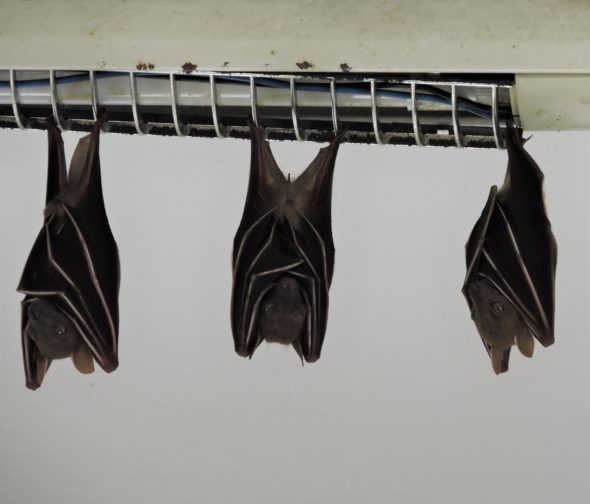
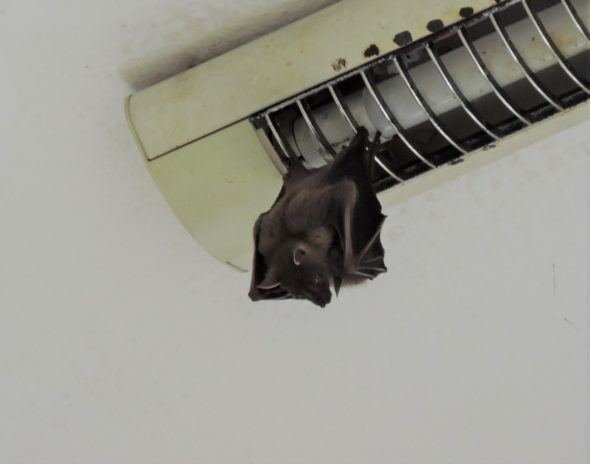
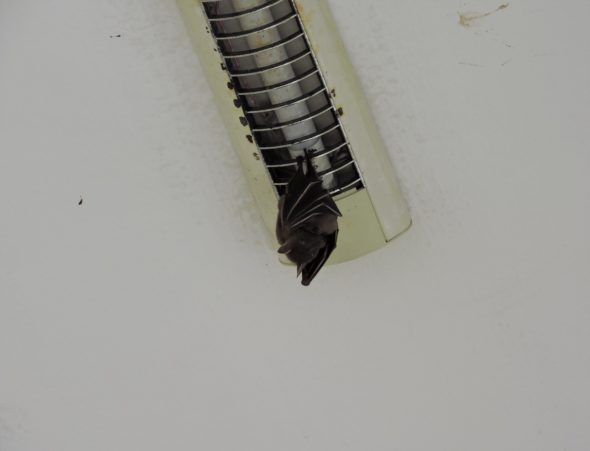
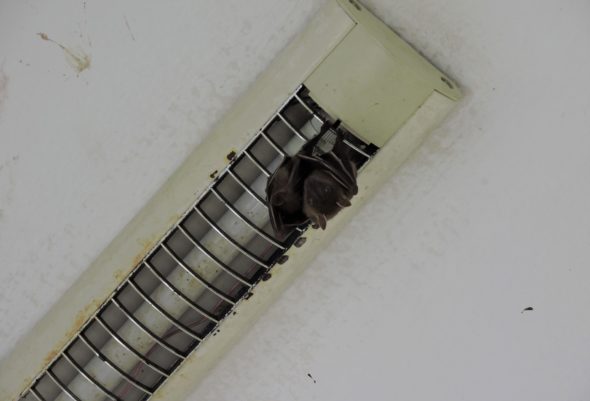
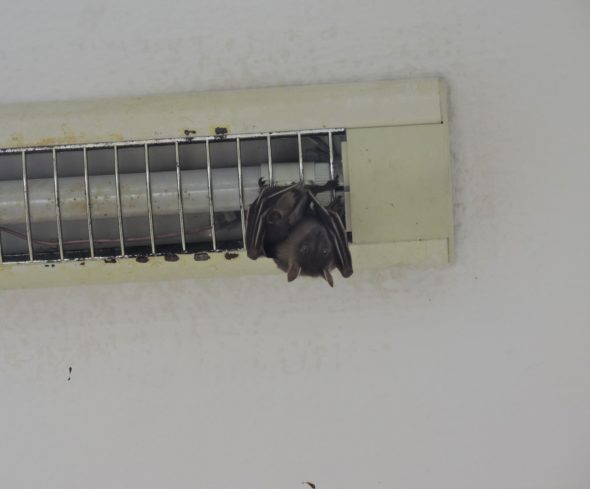
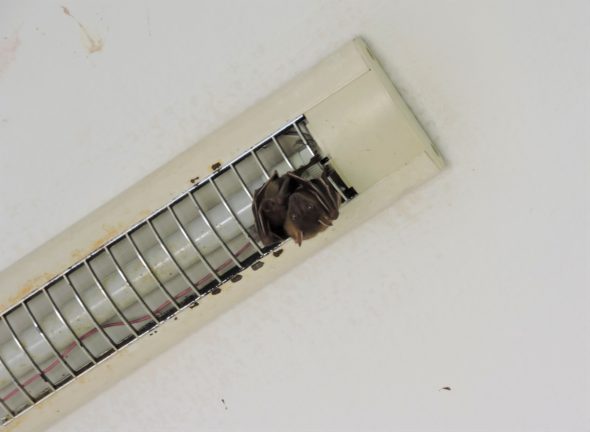
Figs 4-6 shows what appear to be one ear and the lateral head view of the juvenile?
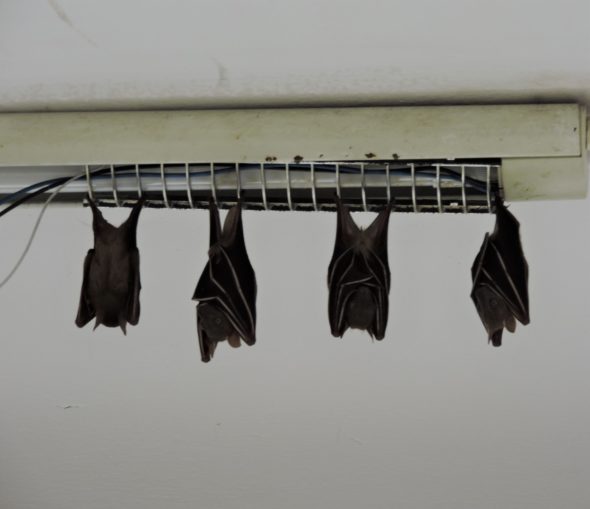
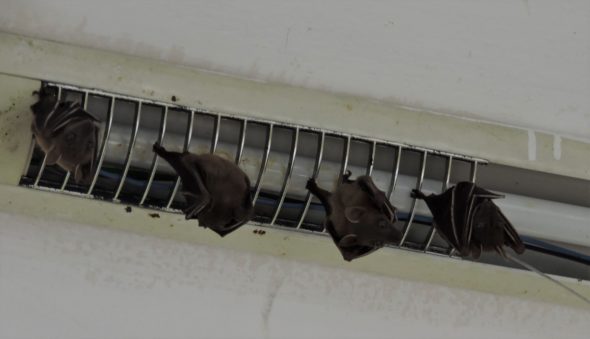
It is interesting to note the big eyes and overall resemblance to puppies!
Interesting snippets: The life-span of this bat is 20-30 years. They are frugivorous and like mangosteens. They suck out the juices and soft pulp of small fruits like chikus (Manilkara zapota), guavas (Psidium guajava), bananas (Musa spp), but swallow small fruits like figs, feed on nectar and pollen too. Medway notes that breeding is not seasonal in Peninsula Malaysia and the young are nursed with mother’s milk for about six to eight weeks. The mother bat carries the pup with her continuously during the nursing period. These bats pollinate flowers and carry out dispersal of seeds.
This bat (Megachiroptera bats) uses its large eyes to navigate at night, instead of echolocation (Microchiroptera bats). Sight and sound are used together to navigate.
Ng Di Lin
Lecturer, American Degree Transfer Program
Methodist College Kuala Lumpur
Off Jalan Tun Sambanthan 4, Brickfields, 50470 Kuala Lumpur.
References:
- https://en.wikipedia.org/wiki/Lesser_short-nosed_fruit_bat
- https://www.ecologyasia.com/verts/bats/lesser_dog-faced_fruit-bat.htm
- https://wiki.nus.edu.sg/display/TAX/Cynopterus+brachyotis+-+Lesser+Dog-faced+Fruit+Bat
- https://besgroup.org/2014/06/27/bats-roosting-in-my-porch-1-introduction/
- https://besgroup.org/2018/03/05/common-fruit-bat-feeding-on-longan/
- https://besgroup.org/2021/09/15/attracting-bats-to-your-garden/
- https://besgroup.org/2022/07/08/barn-owl-controlling-fruit-bats-roosting-on-eaves-of-houses/
- https://besgroup.org/2017/01/25/oriental-pied-hornbill-caught-a-bat/
Note to readers: If you like this post please tap on the Like button at the left bottom of page.








